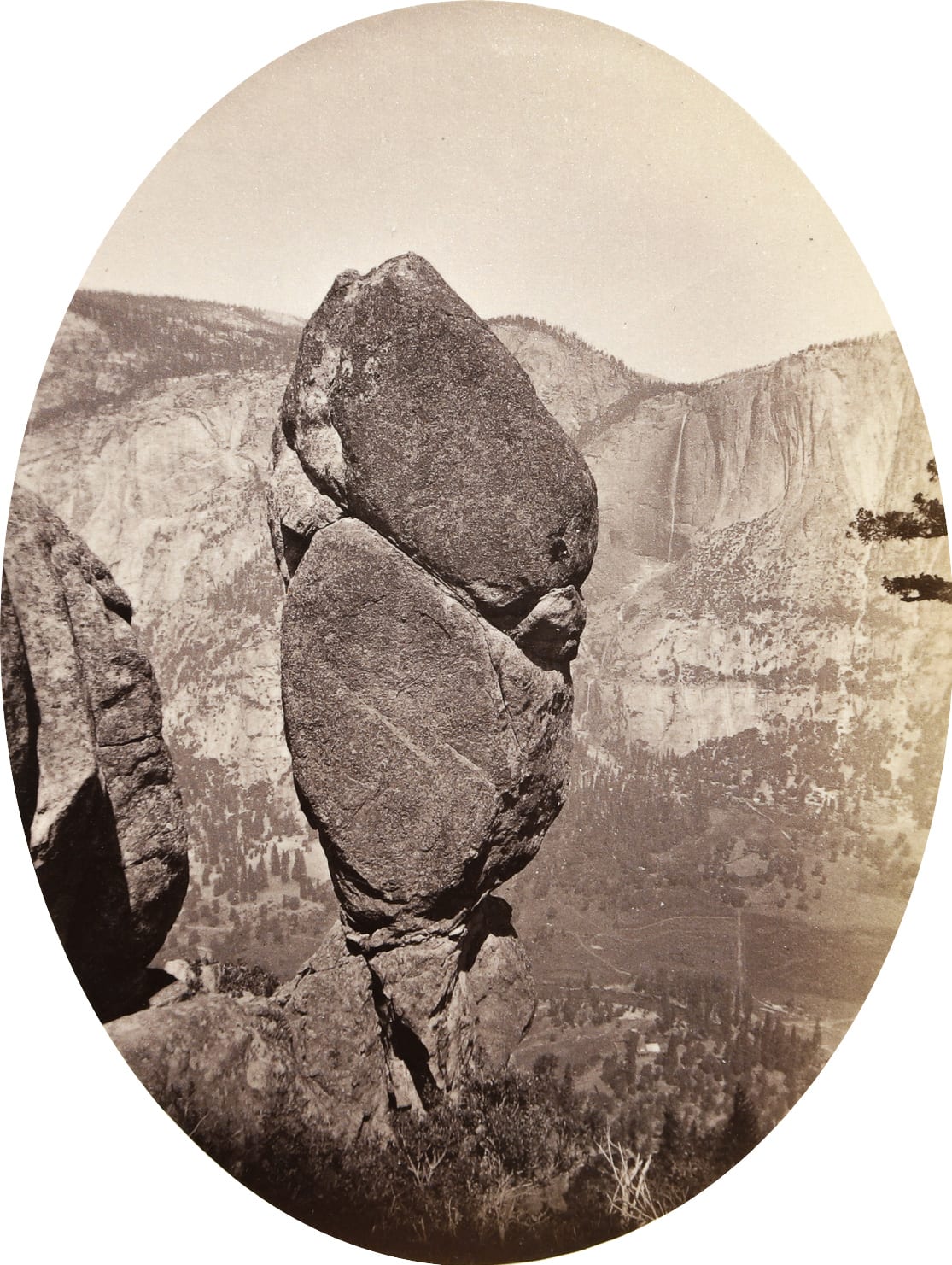-
Artworks
Carleton Watkins
Agassiz Rock from Union Pt, Yosemite, 1878-81Albumen Silver4 7/8 X 3 5/8 inFurther images
While the mammoth version of this subject communicates the monumentality of Yosemite's rocks and the forces that shaped them, in this miniature version, Watkins 'shot Agassiz Rock from an angle...While the mammoth version of this subject communicates the monumentality of Yosemite's rocks and the forces that shaped them, in this miniature version, Watkins "shot Agassiz Rock from an angle that emphasized its fragility” (378). This oval print of a small-format variant of Watkins's most iconic picture is the only example known. Thus, the slightly wider circular print of this composition that resides in the Getty has been the subject of many observations and speculations by art historian Tyler Green. In Chapter 22 of his book, Green explains that in the “circular print, Watkins had hit upon a good idea: for that photograph, he had raised his camera about 15 feet above the ground. (Maybe he placed it on top of his wagon, or maybe he put it up on wooden crates.)… That effectively pushed the rock toward the picture plane, toward the viewer, helped the rock stand out, and helped make plain the distance between Agassiz Rock and the North Rim. Not only did Watkins want the column to push up above the opposite rim, but he wanted to take full advantage of a little protrusion on the right side of Agassiz Rock, a gentle bit of granite that he would use to point at Yosemite Falls. While that seems like an obvious bit of pictorial cleverness that just about every other photographer would have created, none did...” (380).
Green’s extensive observations on Watkins’s small-format variant of Agassiz highlight a very important take-away from Watkins’s oeuvre: while Watkins and his scholars have given due precedence to the mammoth plates, his smaller format pictures exhibit no less artistic merit and compositional virtuosity than his larger ones. In this viewing room, all three variants are shown together for the first time, with each proving its individual virtues and the meanings intended by size.
This four-part grid of oval New Series prints is, according to legendary Watkins scholar Peter Palmquist, unique. Rarely do these small-format ovals, which were conventionally pasted in travel albums throughout the 1880s, survive with such vivid tones. Smaller prints by Watkins are no lesser of artistic achievements—they offer more nuance to Watkins’ monumental vision. Each print is pasted to an album leaf with a typeset title under or above the print edges; while it is likely that each print is signed and titled on the reverse, we have no way of knowing without unmounting. This particular example features three overviews of Yosemite Valley from Union Pt, along with a mirror view of Cathedral Rock. In the Cathedral Rock image, the trees oscillation like a continuation of the Cathedral Spires. The most iconic image in this set is Agassiz Rock, carefully composed with natural landmarks on either edge and Yosemite Falls adjacent to the column. The only other known print of this image is in the circular format, held by the J. Paul Getty Museum, which adorns the cover of “Carleton Watkins: Photographs from the J. Paul Getty Museum” by Peter Palmquist.







